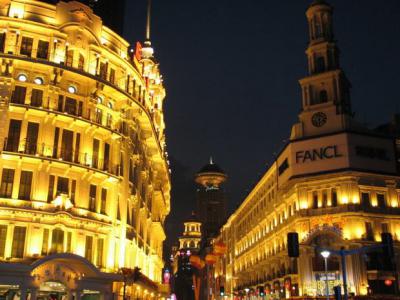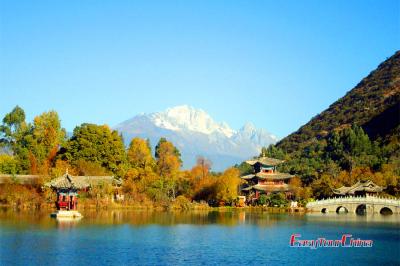Mount Emei Scenic Area
Mount Emei (an elevation of 3,099 meters), located 165 kilometers from Chengdu, capital of Sichuan Province, draws the most attention for its 154-kilometer spread, attracting tourists since ancient times with phenomenal views all the year round. Its highest peak, the Wanfo Summit, starts at 500 meters above sea level and rises to 3,099 meters above sea level, giving it a remarkable variation of temperatures. Therefore as the saying goes, four seasons co-exist on one mountain, where the temperature of one place is different from another only five kilometers away.
Indeed, in March when flowers bloom at its base, Mount Emei's Peak is still thick with snow. In summer, it is scorching hot at the foot but comfortably cool higher up. The seasons each bring its own stunning beauty to Mount Emei. The azaleas of springtime are brilliantly red, while summer is lush and verdant because of the trees and grass. In autumn, the mountain is decorated by autumnal leave, only to be blanketed in winter by fresh white snowfall. Ancient temples, trees and mountain slopes are all covered with snow. The snow can absolutely dazzle tourists. Bitter cold hardens it into ice, turning the trees into "ice flowers".

Mt. Emei Facts
-Chinese name: 峨眉山风景区
-Location: NO. 41 Minshan South Road, Emeishan City, Leshan City, Sichuan Province
-Total Area: 154 square kilometers
-Time needed: 1-3 days
-Open hours: all day
-Entrance fee: CNY150 (Jan 16th – Dec 14th), CNY90 (Dec 15th – next Jan 15th)
Best Time to Visit Mt. Emei
Spring and autumn are the best seasons to visit Mount Emei. At this time, the climate at Mount Emei is pretty moderate and the scenery is so charming. Spring is the season for the Azalea to blossom, and you will see the colorful azalea all over the mountain. While enjoying the flowers, you may also have a chance to experience the pilgrimage meeting which will hold at Mount Emei in each May. Moreover, you can also taste fresh Emei tea during this time. In autumn, you can see the gorgeous red leaves all over Mount Emei. However, the autumn of Emei is short. From the middle of September to the end of October, the leaves turn from green to yellow and from yellow to red, standing on the Golden Summit, you will be amazed by this gorgeous beauty. Visiting to Mount Emei is a great excursion for your Chengdu trip.
What to See at Mt. Emei
Emei Mountain is extremely rich in biological species and a wide range of endemic species. There is a complete subtropical vegetation system, with more than 3200 plants. Emei Mountain is also the habitat of many rare animals which has more than 2300 species. Emei Mountain has the largest wild natural ecological monkey area of China, about 1000 monkeys spread in the area between 800 meters and 2400 meters above sea level. You are most likely to encounter monkeys near Hongchunping, Xixiangchi, Yixiantian, etc.
Monkey in Mt. Emei is Tibetan Macaque which is the second grade state protected animal. They are nicknamed by people as "intelligent monkey" or "monkey hermit" for they have made home in this holy mountain of Buddhist culture. Accustomed to the throngs of people visiting their habitat, these lovely monkeys are dotted across the mountain, begging for food or playing intimately with tourists. They have become a major part of the scenery in Mt. Emei Scenic Zone.
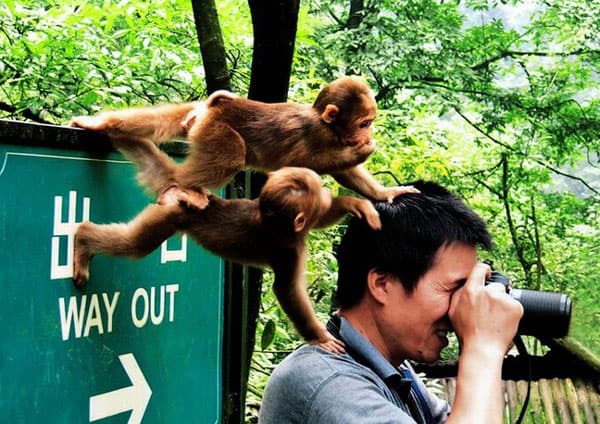
Mount Emei is one of the famous Buddhist Mountains in China, it is said that Buddhism was introduced into Mount Emei in the 1st century AD. There are about 26 monastery in Emei Mountain, and eight famous temples are: The Baoguo Temple, The Wannian Temple, Hongchunping, Elephant's Bathing Pool, The Fuhu temple, Qingyin Pavillion, Xianfeng Temples, Huacang Temple. Religious culture, especially Buddhist culture constitutes the main part of Emei Mountain’s culture. If you are interested in Buddhism, both Leshan Giant Buddha and Mount Emei are must-go places when you traveling in Chengdu.
Emei Mountain is a good place for hiking, and the total hiking path on Mount Emei is about 60 kilometers. You can either choose to combine a leisure hiking with cable cars to save energy and time, or go for an in-depth hiking which will take at least 2 days.
Major Mt. Emei Attractions
Golden Summit
The Golden Summit of Mount Emei also known as Huangzang Temple, with an altitude of 3079m, it is the highest peak that tourist can get to. There was a bronze hall on the summit, its dazzling in the sunlight just like the golden light, hence the name Golden Summit. If the weather permits, tourist can enjoy the four wonders of Mount Emei: Sunrise, Cloud Sea, Buddha’s Halo and Holy Light.
The Golden Buddha on the summit is the tallest Puxian Buddha golden statue in the world. The Golden Buddha is a gilded bronze statue with a height of 48 meters and a total weight of 660 tons. The 48 meters height of the Golden Buddha represents the 48 great wishes of Amitabha. The 10 portraits of Puxian Buddha are divided into three layers with different expressions, which representing the ten kinds of mentality of the world.
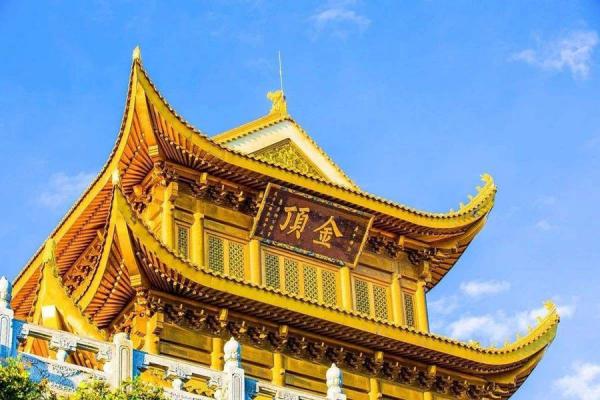
Wannian Temple
As one of the eight main temples in Mount Emei, Wannian Temple has a very exquisite layout. The whole temple faces east from the west, followed by the gate, Maitreya Hall, Brick Hall, Weie Hall and Daxiong Hall. Except the Brick Hall with brick dome, the rest are wood structure. The Brick Hall of Wannian Temple is a great wonders, it has survived 18 earthquakes over the past 400 years and it’s known as a miracle in the history of ancient Chinese architecture.
Baoguo Temple
Baoguo Temple is the largest Temple in Mount Emei, and it is also the starting point of visiting Emei Mountain. As the portal of the whole Emei Mountain, it’s the center of various Buddhist activities, and the Emei Buddhist Association is also here. Baoguo Temple was first built in Ming Dynasty, and the plaque of Baoguo Temple was written by Emperor Kangxi. There are three treasures in Baoguo Temple, one is the giant porcelain Buddha in the seven Buddha Hall, one is the 7 meters high, 14 layers red copper “Huayan Pagpda” (now moved to Fuhu Temple), the third one is the large bronze bell with a height of 2.3 meters and a weight of 25 tons.
Legend and History of Mount Emei
A local story about how Mount Emei got its present name reflects the legendary stature of the beauty and romance of the mountain. Emei is a poetic term for "beautiful women". Legend has it that there was a temple outside the west gate of the town where a monk gave shelter at one time to a painter. The painter repaid his kindness with four pictures, each of which had an elegant, and lovely young girl on it. The painter told the monk the paintings must remain in a trunk for 49 days after his departure.
But the monk, too impressed to give attention to the painter, hung them on the wall immediately. When the monk returned that evening, he was shocked to see four girls giggling away in the hall, the pictures now completely blank. As the monk realized that they had leaped from the portrait, the girls ran out of the room. Giving chase, he was only quick enough to hold the skirt of the youngest girl who, in desperation, escaped his clutches by changing into a mountain peak. The other three, hating to abandon her, did likewise, which explains why Mount Emei had three peaks close together and a fourth standing a little distance apart.
Mount Emei is more than a big mountain to many people. It can also be a frame of mind, and not just because looking up at its monumental heights forces tourists to recognize their smallness. For centuries, the Chinese people have believed nature has a mysterious influence on man's character, and mountains supremely exemplify nature. Mixed up with this tradition was the ancient folk belief that mountains were the magical habitants of immortals.
Like the three other sacred mountains - Wutai Mountain, in Shanxi Province, Juihua Mountain in Anhui Province, and Putuo Mountain in Zhejiang Province - Mount Emei's sacred character has been thoroughly institutionalized by many temples on its mountain slopes. Buddhism arrived on Mount Emei some 2,000 years ago and left behind more than 30 temples, including over 10 that represent a unique Mount Emei style.
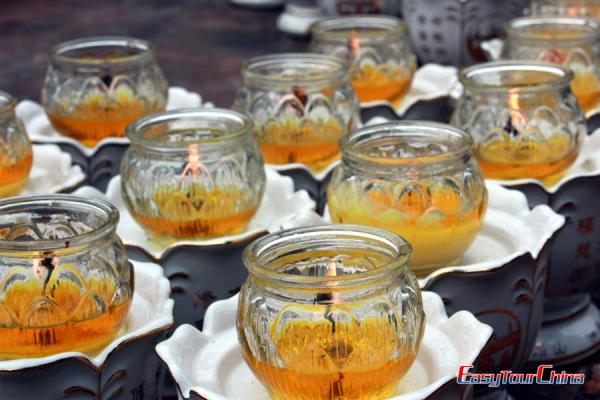
How to Get to Mt. Emei
Train: You can take high speed train from Chengdu East Rail Station or from Shuangliu Airport, get off at Emeishan Station and then change to Bus 5A, 8 or tourism bus to the scenic spot.
Bus: Take a long-distance bus from Chengdu Xinanmen Bus Station to Emeishan Tourism Bus Center (Baoguo Bus Station), and then walk to the entrance. The bus normally takes about 2.5-3 hours and the ticket cost around CNY50.
